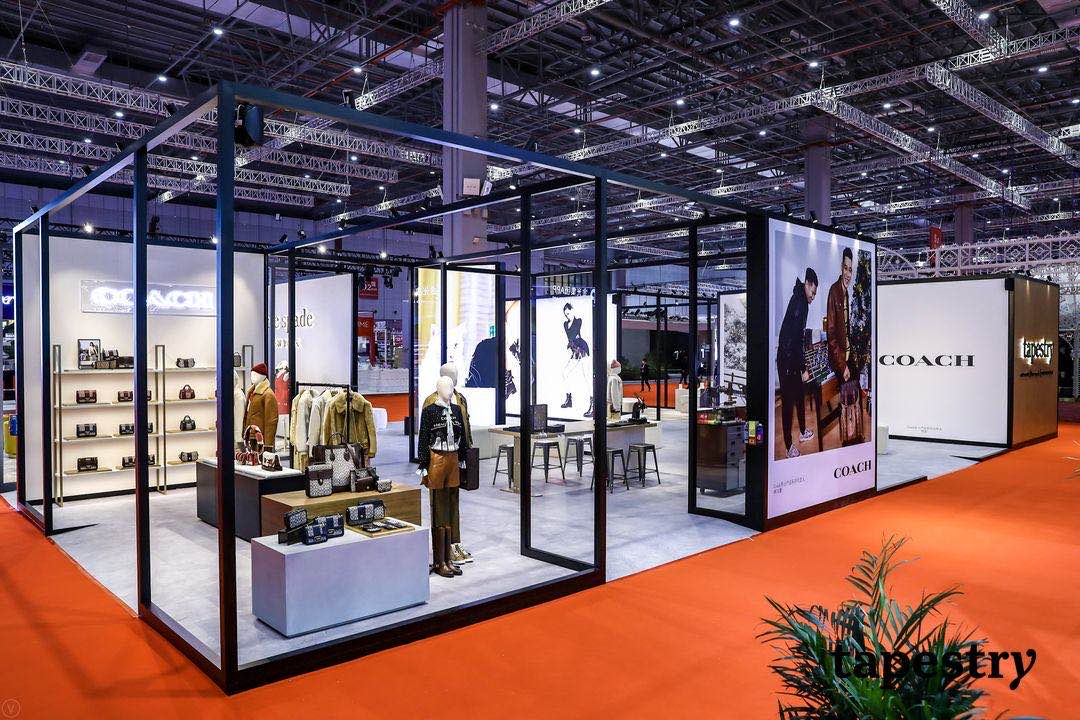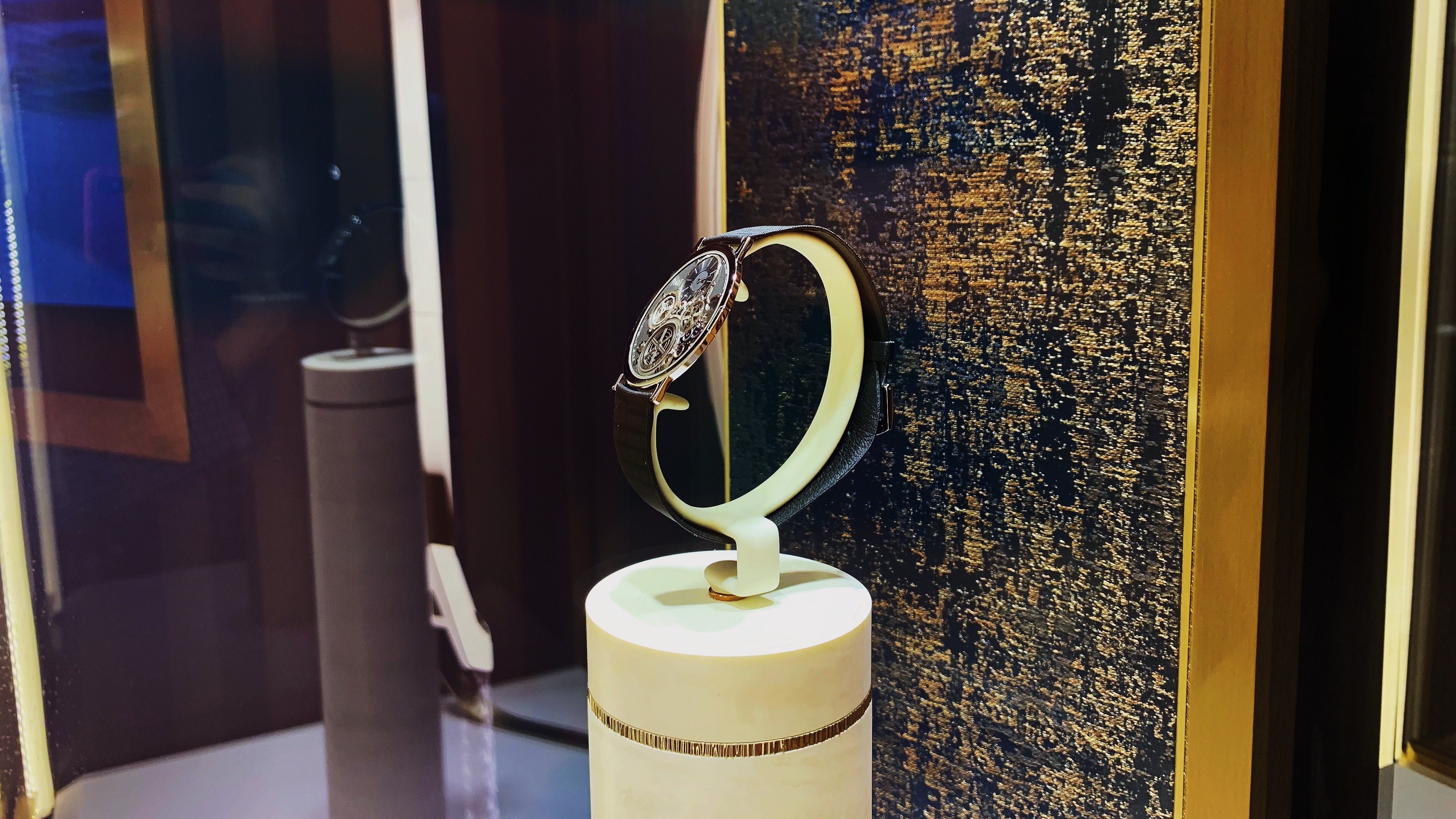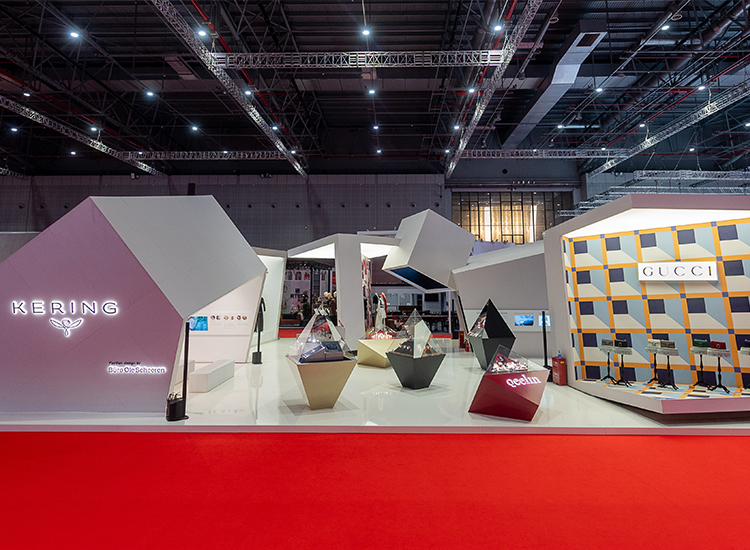High-fashion conjures up images of exclusivity and class with its hefty price tag and craftsmanship. And China is leading the market in both style and cents as big names in luxury pull out all the stops at this year's China International Import Expo (CIIE) in Shanghai.
With their eye-catching displays, fashion houses likes Richemont, Kering and Tapestry are hoping to raise their brand profile in Shanghai – especially amid a pandemic, where China has become a tour de force in lifting the industry out from the doldrums.

New York fashion house Tapestry showcases its latest collection from Coach, Kate Spade and Stuart Weitzman at the CIIE. /Tapestry
New York fashion house Tapestry showcases its latest collection from Coach, Kate Spade and Stuart Weitzman at the CIIE. /Tapestry
CGTN had separate discussions with Kering's Asia Pacific CEO Cai Qingjing and Tapestry Asia Pacific President Yann Bozec to learn more about the luxury market in China.
China drives luxury market recovery
Chinese consumers account for about a third of global spending on luxury goods, and that figure is forecast to reach 45 percent or more by 2025, Cai told CGTN, adding China's dual circulation policy and "revenge spending" amid the pandemic are expected to accelerate that.
"Because of the repatriation spending from Chinese tourists who usually shop overseas, they are now shopping online, we have seen quite high growth from double digits to triple digits from digital sales," she said.
With a growing middle class, Chinese consumers are flush with cash to spend on personal luxury items, and fashion houses are keenly aware of this and launching products right in the country.
"We have a lot of products which are long in China before they are launched anywhere else in the world. It happened even more recently so it's not because you will go outside of China that you will have something newer than in China. That's not the case anymore," said Bezoc.

Piaget, a Swiss luxury watch brand, unveiled the world's thinnest mechanical watch, measuring only 2 millimeters thick. Cheng Meihao/CGTN
Piaget, a Swiss luxury watch brand, unveiled the world's thinnest mechanical watch, measuring only 2 millimeters thick. Cheng Meihao/CGTN
At this year's CIIE, luxury brands are showcasing their latest collections, with Piaget launching the world's thinnest mechanical watch and Ulysse Nardin displaying a limited edition enamel watch specially designed for CIIE.
Cashing in on the young, rich and tech-savvy
Compared to the West, the average age of luxury consumers in China is below 35, and fashion brands will have to speak their language and engage them using channels they are familiar with: livestreams, online stores and Chinese social media platforms.
With an eye on this market, Alibaba set up the Tmall Luxury Pavilion in 2017 to appeal to this segment of consumers. Just this week, Richemont and Alibaba secured a $1.1 billion partnership with Alibaba to invest in online luxury retailer, Farfetch.
For Kering, who owns brands like Gucci, Balenciaga and Bottega Veneta, engagement both online and offline is key, as physical stores still remain a key touchpoint for the company.

Kering is participating in the CIIE for the second consecutive year. Its brand portfolio include Gucci, Saint Laurent, Bottega Veneta, Balenciaga, and Alexande McQueen. /Kering
Kering is participating in the CIIE for the second consecutive year. Its brand portfolio include Gucci, Saint Laurent, Bottega Veneta, Balenciaga, and Alexande McQueen. /Kering
"Our goal is to provide a seamless experience, offline and offline," said Cai, elaborating that "many of our brands already have Chinese or '.cn' e-commerce websites and mini programs."
Tapestry is also doing the same by encouraging in-house associates to become key online influencers and providing training to do livestreams so the interaction continues digitally as well.
"The relationship between customer and luxury is not that much evolving in the quality of the connection. One customer, one sales associate around one product, that's how you build a brand, but the connection can be done in a store or digitally," elaborated Bezoc.
Leading the world in style
Chinese consumers may have looked to the West for the latest trends in luxury in the past, but the tide is turning as fashion houses now look to China for inspiration.
"Maybe 20 or 25 years ago, there was a time when Japan was cool. I believe now China is cool," jested Bozec.
"I think the Chinese customer path has come from a place where it was kind of studying luxury, extremely curious, being students of fashion, and now is really sitting into the driving seat," he added.
Cai revealed that Gucci and Balenciaga have also been looking to Chinese millennials in the design phase as they may very well be the future of luxury on the global stage.
"We are feeling a lot of trends from the younger generation who are actually very expressive. They want to share, and they are very confident buyers. They also think they are behind the the trends for the future of luxury. And we want to be very close with them – having a conversation rather than pushing products," said Cai.
Luxury brands are dependent on China now more than ever, and centuries-old fashion houses will have to adapt and engage to remain relevant.
(Cover image: Visitors at the Gucci booth take photos of latest products at the CIIE in Shanghai, China, November 6, 2020. /CFP)